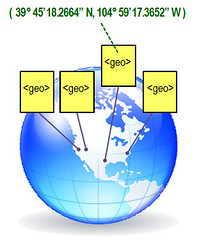I posted an article today on “Should You Geotag Pages For Local SEO?” on Search Engine Land. In it, I describe the cases in which I think you should geotag a webpage.
Essentially, I state that locally-oriented webpages for businesses or content pages which have full street addresses should probably be tagged with hCard microformats, as I’ve described before.
Otherwise, if you have a locally-oriented webpage about something which has a place in the physical world, but which is not associated with an actual street address, I believe use of geotagging makes sense. Increasingly, specialized search engines (and even Google Maps, Yahoo! Maps, and Bing Maps) are pinpointing such content and making it readily available for online users.
The other frequently-confusing aspect of geo tagging of webpages is caused by the fact that there’s no clearly-dominant standard for formatting of geotag information. At least four major standards have been deployed out into the wild, with no clear winner! Luckily, one could probably use all four simultaneously on a page without taking extreme measures — and, considering how relatively easy it is to add the geocoding to the page in the first place, I see no reason not to add all four at once if you have a valid reason to geotag the page.
I believe we’re going to see increasing adoption of geotagging as the major online mapmakers make more geographic information available to map consumers. Google’s recent deployment of “Rich Snippets” is a prime indication that more semantic markup data may become enabled in order to enrich online users’ search experiences, and local mapping data is one of the prime areas where they’re likely to add more functionality. (See also my article on Optimizing Search Listings for more details about how semantic markup such as hCard Microformats may position your site for greater online success.)









